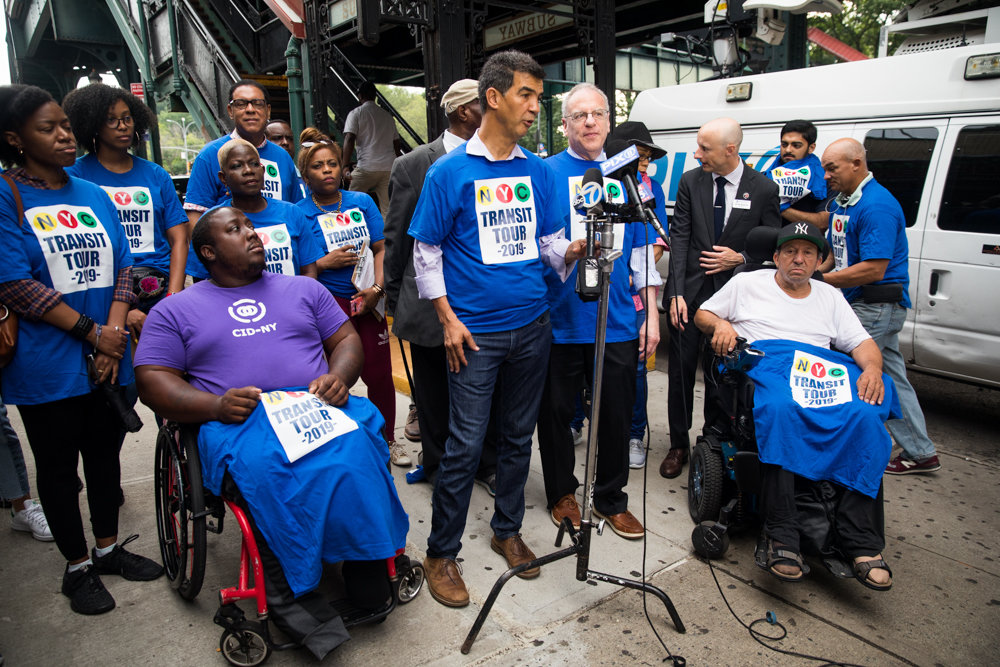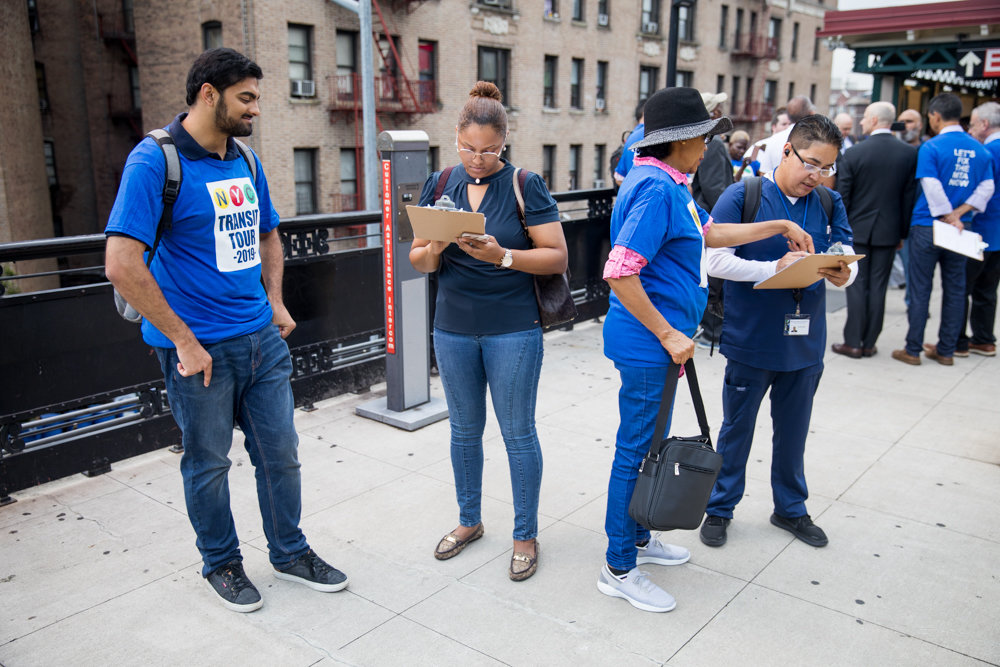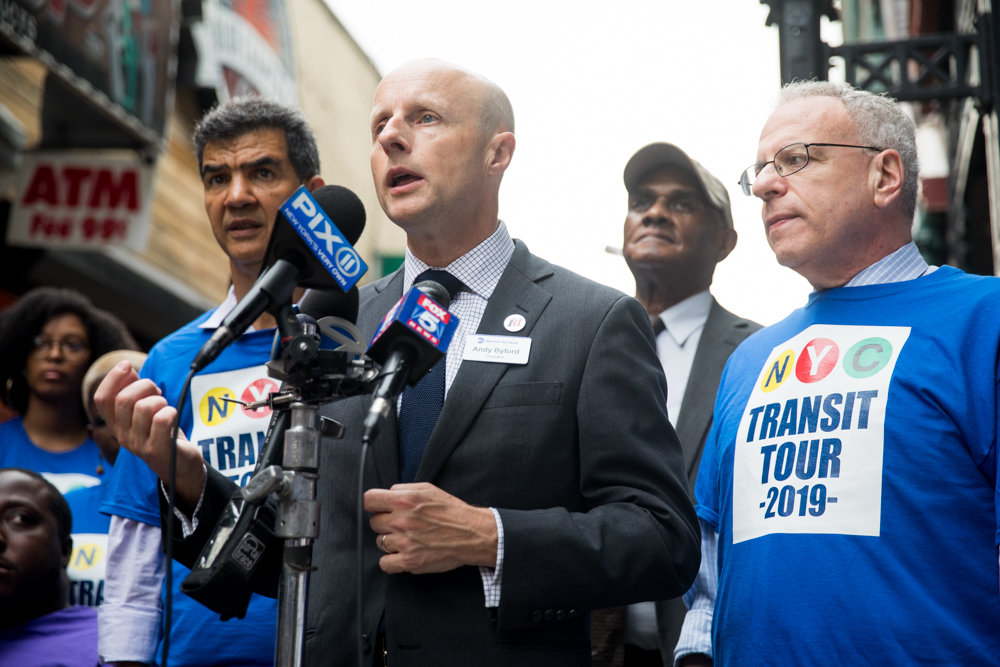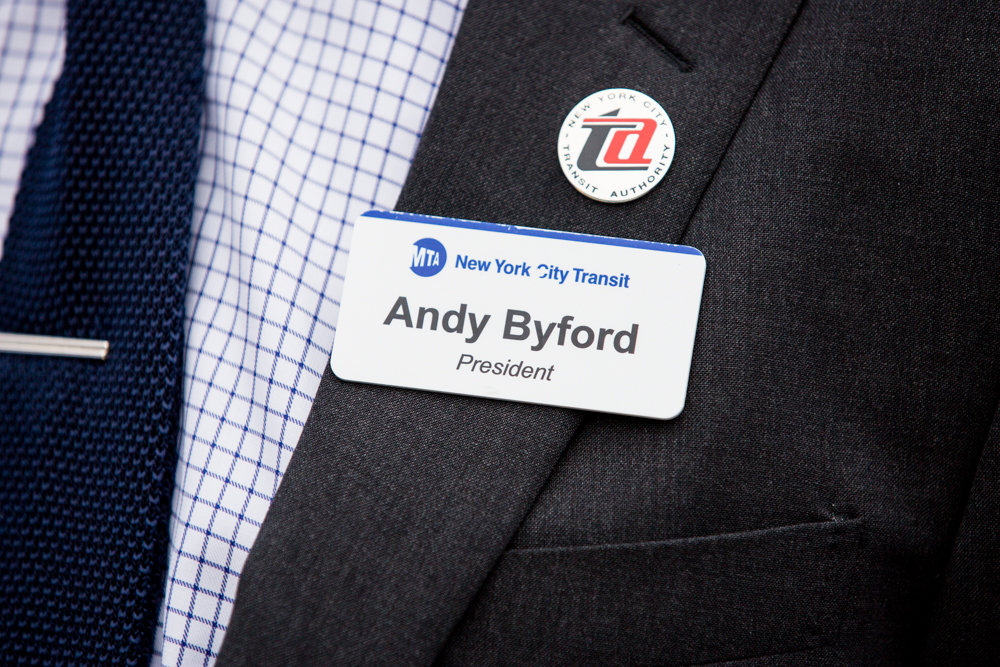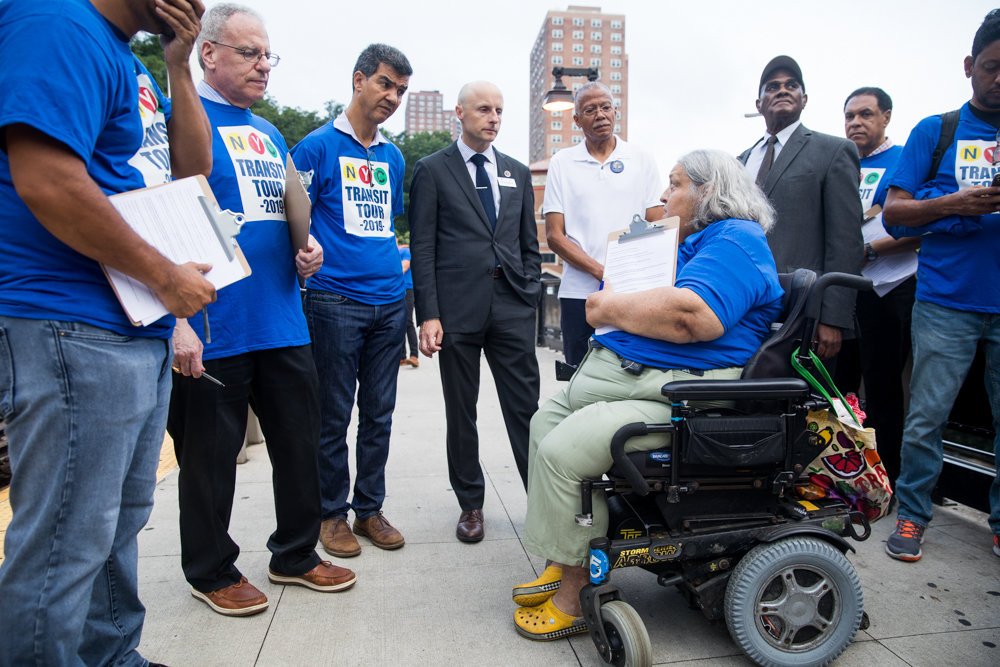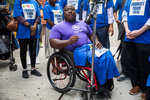Pain worth the gain? Straphangers speak out
It’s now the third year that elected officials wake up at the crack of dawn and travel the city by subway seeking the opinions of the straphangers around them. But for Andy Byford, it’s a first.
Byford, who took over the New York City Transit Authority in January 2018, couldn’t wait to start collecting surveys from those who depend on the very system he runs day in and day out.
“It’s my first tour, so I’m very excited about it,” Byford said. “I’m honored to be asked. It’s consistent with what I do every day — it’s about talking to customers, which is the essence of my job, and I think it’s fantastic that our elected officials are taking two days out to cover the whole network, all five boroughs, and ask customers what they like about the system or what don’t they like.”
The two-day Riders Respond Transit Tour began in the early morning hours of Aug. 7 at the 1 train’s West 242nd Street station, continuing down through Manhattan to City Hall, and then back up to 181st Street. Along the way, Byford and Councilman Ydanis Rodriguez handed out surveys asking riders questions like how often they experience unexpected delays, and which subway improvements they would most like to see prioritized.
Results of the survey will be discussed at a public hearing later this year.
The top three complaints delivered to Byford focused on train reliability — or lack thereof — slow and unreliable bus service, and the inaccessibility of most subway stations. That accessibility focuses on the lack of elevators at many train stations, especially the elevated line in the Bronx where anyone needing help to the 1 train would have to travel to West 231st Street to find it.
“There’s a lot of problems in the Bronx, and they’re not the same problems as in Manhattan,” said Assemblyman Jeffrey Dinowitz, one of the electeds who was out surveying commuters last week. Bus service is a Bronx-specific challenge: The bus is the primary mode of transportation for 16 percent of Bronx commuters.
Bronx buses are some of the slowest in the country, running at an average of 7 mph, according to the Metropolitan Transportation Authority, with many slowing to 5 mph during rush. Combined with already patchy subway service and temporary issues like the weekend closure of the 1 line for track replacement, public transportation in the Bronx can be more trouble than it’s worth.
Byford’s Fast Forward Plan for Bronx buses includes enforcing clear bus lanes, increasing the distance between stops, allowing all-door boarding once the OMNY contactless payment systems are installed, and improving and streamlining bus routes.
“We’re redesigning the bus service in all five boroughs, but we’re doing that from a customer-led perspective,” Byford said. “We’re running workshops to ask customers ‘What do you want your future bus service to look like?’”
Workshops have already come and gone in the Bronx, with MTA proposing some changes to the borough’s bus lines like the removal of stops, but no significant route changes.
The fact the transit tour kicked off from the West 242nd station is an interesting one for Dustin Jones. He’s a wheelchair user and a board member of the Center for the Independence of the Disabled New York, and points out that the northernmost end of the 1 train line is one of more than 300 stations that fail to meet federal Americans with Disabilities Act standards. This means that wheelchair users and those with other disabilities who need to use elevators are left with limited transportation options.
Jones must transfer trains and buses four times on his 90-minute commute to work. If all subway stops were accessible, Jones said, his commute would be just 20 minutes.
Even with elevators installed, they’re frequently not working, Jones said, and more than once he’s been stuck on a platform because of a malfunctioning lift.
“You don’t know who else is taking the stairs because there’s no other choice,” Jones said. “You don’t know how it’s affecting them.”
Tashia Lerebours, a peer advocate at the independence center, has epilepsy and feels unsafe using the towering stairs leading to the subway.
“When I have a seizure, I can no longer sense when it’s coming, what kind it’s going to be,” she said. If that were to happen while she’s climbing up or down the stairs, she could be seriously injured, or even killed in a fall.
Of the 68 subway stations in the Bronx, only 12 are wheelchair accessible, according to the MTA. But even riders without physical disabilities may still need elevators, according to Danny Pearlstein, the policy and communications director for Riders Alliance. Pearlstein struggles to carry his daughter’s stroller up and down subway stairs.
And that could be a deadly proposition. Last January, Malaysia Goodson died after falling down station stairs at 53rd Street while trying to carry her daughter in a stroller.
Dinowitz proposed a bill earlier this year that would force the MTA to install 50 elevators at subway stations across the city over the next five years, and increasing that to 130 stations by 2029 before achieving full accessibility by 2034. The bill covers installation of elevators, reducing gaps between trains and platforms, and adding tactile strips at the edges of platforms. That bill died in committee last session.
But even bombarded with complaints, there are still positives, Byford said. Surveys conducted by the MTA show increased customer satisfaction, complete with statistics that match. In the past year, subway reliability has increased from 60 percent on time to 80.
“I do accept that there’s a lot more to do,” said Byford, who previously spent six years running Toronto’s mass transit operations. “We just ask New Yorkers to bear with us. A lot of the work we need to do will require their patience. It will mean we have to do work at night, on the weekends. But the gain will be worth the pain.”


